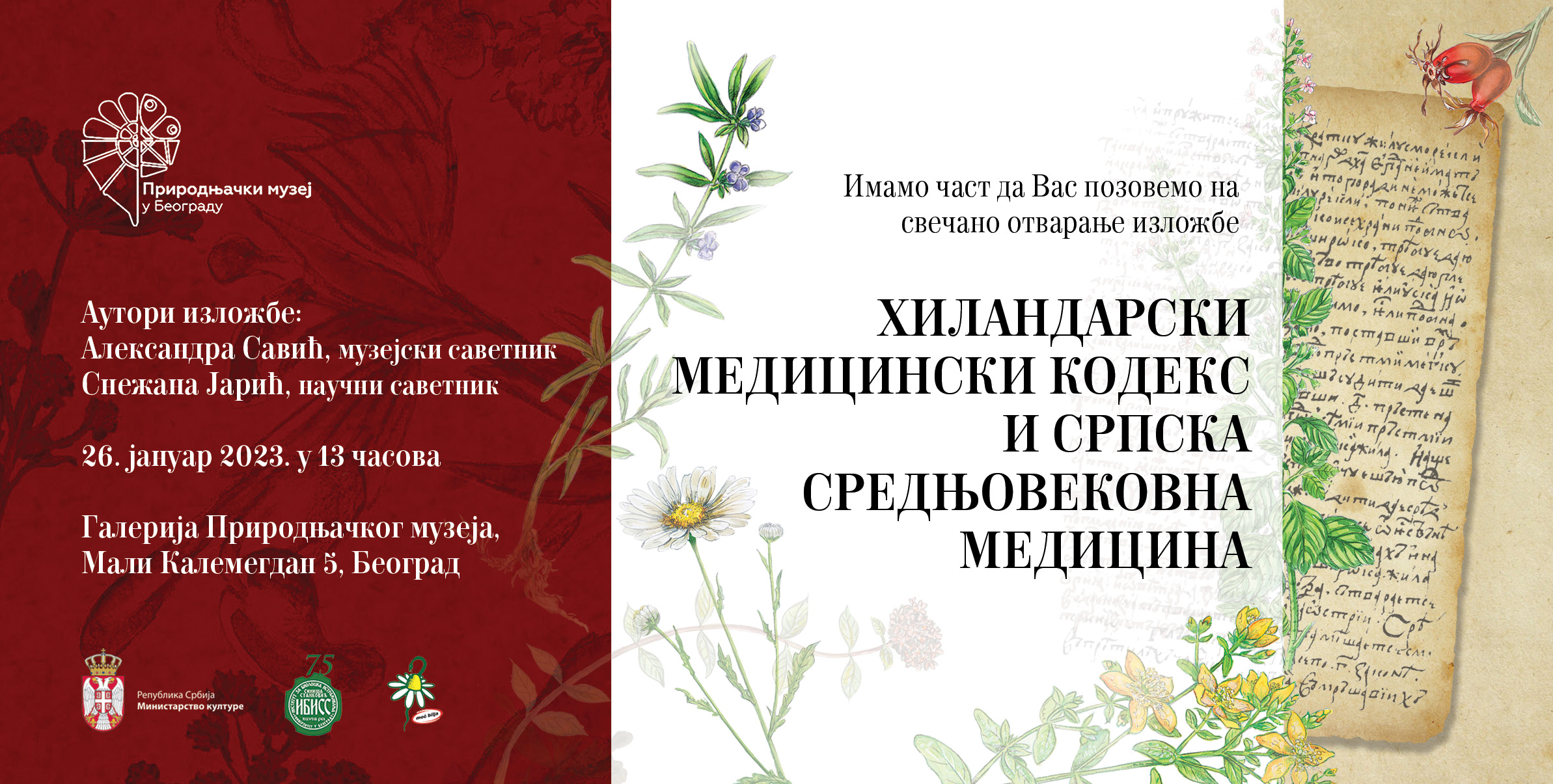On Thursday, January 26, 2023, at 13:00 in the Gallery of the Natural History Museum, the exhibition "The Hilandar medical codex and Serbian medieval medicine" will be opened, the authors of which are Aleksandra Savić, museum advisor of the Natural History Museum in Belgrade, and Dr. Snežana Jarić, Principal Research Fellow of the Department of Ecology of the Institute for biological research "Siniša Stanković".
 The Chilandar Medical Codex (CMC; 15-16th centuries) is the most significant and best preserved medieval Serbian manuscript and collects together documents on European medical science from the 12th to 15th centuries. It is a unique collection of preserved medical and pharmacological manuscripts that can be viewed as the first Serbian and the first Slavic pharmacopoeia. In 1952, academician Djordje Sp. Radojičić discovered the manuscript in the treasury of the Serbian monastery Hilandar on Mount Athos. He named it after the manuscript's first page “Explanation of the Diagnosis of Disease Based on the Pulse” (Besѣda ot poznanіїа болѣsti po pipanіїю жіъ). The writings include several types of manuscripts: on internal medicine, infectious diseases, pharmacology, toxicology, pediatrics, therapeutic instructions and surgery.
The Chilandar Medical Codex (CMC; 15-16th centuries) is the most significant and best preserved medieval Serbian manuscript and collects together documents on European medical science from the 12th to 15th centuries. It is a unique collection of preserved medical and pharmacological manuscripts that can be viewed as the first Serbian and the first Slavic pharmacopoeia. In 1952, academician Djordje Sp. Radojičić discovered the manuscript in the treasury of the Serbian monastery Hilandar on Mount Athos. He named it after the manuscript's first page “Explanation of the Diagnosis of Disease Based on the Pulse” (Besѣda ot poznanіїа болѣsti po pipanіїю жіъ). The writings include several types of manuscripts: on internal medicine, infectious diseases, pharmacology, toxicology, pediatrics, therapeutic instructions and surgery.
The importance of the CMC for Serbian medicine and culture is immense because it shows that the medieval Serbs were familiar with developments in European scientific medicine. Furthermore, it represents a treasure chest of lay medical terms and the first written work to contain both common names and scientific botanical terminology.
In the European context, the value of the CMC can be seen in the fact that it represents the only known example of a major collection of medical manuscripts from the Salerno-Montpellier school written in the vernacular and in the Cyrillic alphabet. At the time of its creation, medical manuscripts were mainly written in Latin, which was considered the language of science. The contents of the CMC show that the impact of the medicine of the Salerno-Montpellier school was not limited only to the countries which were under the dominant influence of Italian culture, but those of Byzantine culture, too.
IBISS uses analytical cookies to analyze the use of the site in order to improve the user experience, by clicking "Accept" you consent to the use of cookies.